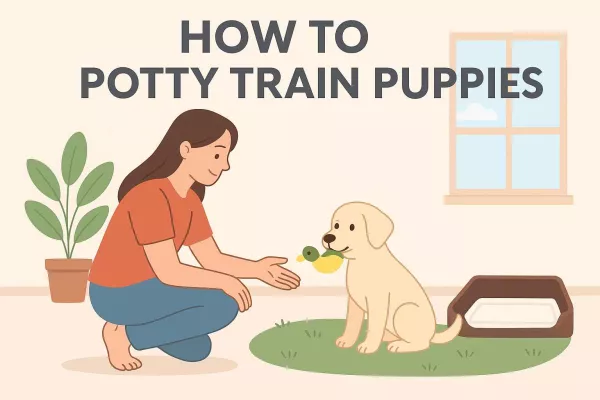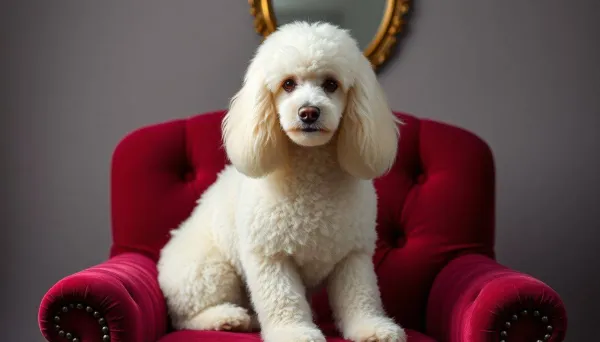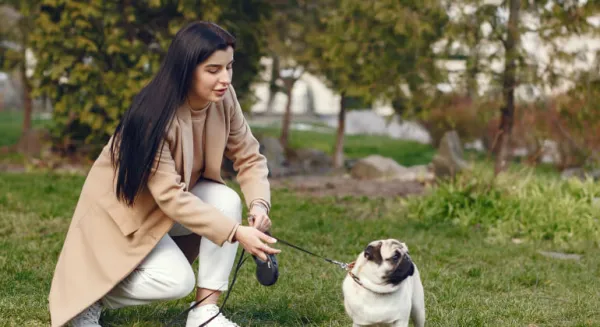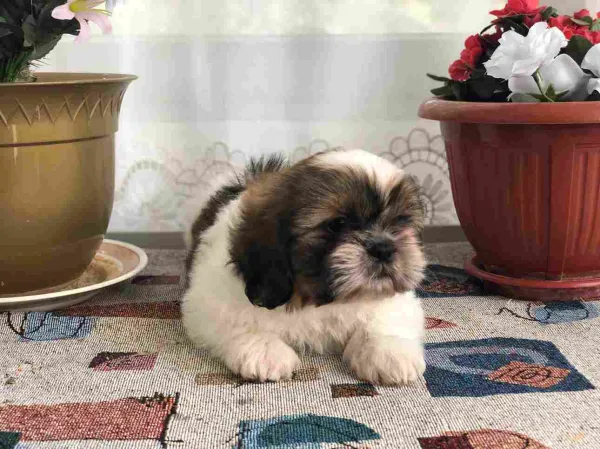Learn how to potty train puppies with ease. This complete step-by-step guide covers techniques, tips, schedules, and solutions to common challenges for housebreaking success.
Potty training a puppy can feel overwhelming—but with consistency, positive reinforcement, and structured routines, you and your pup can achieve success quickly and effectively. This guide covers the essential steps, backed by expert recommendations and best practices.
1.Establish a Consistent Schedule
Take your puppy outside first thing in the morning, after meals, after naps, after playtime, and before bedtime
Puppies generally manage to hold it for one hour per month of age—for example, a 2-month-old puppy may hold it for about two hours
When starting, offer potty breaks every 1–2 hours to reduce accidents and build a reliable routine
2.Use a Designated Potty Spot
Pick one spot for your puppy to relieve themselves and take them there consistently
Outdoors, this reinforces the smell and space as “the bathroom”; using a cue phrase like “Go potty” helps puppies associate the action with the command
3.Crate Training & Supervision
When indoors, supervise your puppy closely—use baby gates or playpens to limit access to the house
Crate training leverages a puppy’s natural instinct to keep their sleeping area clean. Make sure the crate is just the right size—enough to stand, turn around, and lie down—and gradually adjust it as they grow
4. Positive Reinforcement Only
Praise and reward your puppy immediately after they eliminate in the correct spot with treats, verbal praise, or playtime .
Avoid punishment. Scolding or humiliating a puppy for accidents can create anxiety and lead to unwanted hiding behaviors .
5. Handle Accidents Calmly and Clean Thoroughly
If your puppy has an accident, redirect them calmly to the correct spot but avoid punishment .
Use a pet-specific enzymatic cleaner to eliminate odors. This prevents repeat accidents in the same spot
6. Learn Your Puppy’s Signals
Puppies often give off subtle cues like sniffing, circling, squatting, or heading toward the door when they need to potty .
Responding quickly to these signals helps reinforce consistent behavior.
7. Optional Indoor Solutions: Pads or Turf
If outside trips are impractical (e.g., in apartments), you can start with potty pads, then gradually phase them out:
Choose absorbent pads in a consistent location.
Introduce them with a cue phrase and encourage use.
Reward immediately after correct use.
Gradually move the pad toward the door if transitioning outside later
Another option: using indoor dog litter boxes or artificial turf areas, especially in tight living spaces
8. Use a Cue Word Consistently
Stick to a consistent verbal cue like “Go potty” at each bathroom break. Over time, your puppy will understand what action the cue refers to
9. Expect Progress (Not Perfection)
Most puppies are reliably potty trained by 4 to 6 months of age. Some may take longer—every dog is unique
Be patient and stay consistent—the sooner you start, the easier it becomes
Potty training is a key milestone in your puppy’s life. With consistency, positive reinforcement, and a structured routine, you'll be amazed at how quickly they learn. Keep smiling and stay patient—soon your pup will master their bathroom habits!





